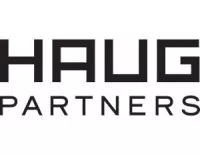Less than three years after implementation of the Inter Partes Review process, the life science industry is already calling upon Congress for significant reform.
When the Leahy-Smith America Invents Act ("AIA") was signed into law on September 16, 2011, it resulted in substantial changes to the United States patent system. Among the changes was the introduction of a new post-grant proceeding, inter partes review ("IPR"),1 and the creation of the tribunal responsible for conducting these proceedings, the Patent Trial and Appeal Board ("PTAB").2 The IPR procedure allows a party to challenge the patentability of a patent as anticipated (35 U.S.C. § 102) or obvious (§ 103) based on prior-art patents and printed publications.
The IPR process is initiated when a third party (who is not the patent owner) files a petition for IPR with the United States Patent and Trademark Office ("USPTO"). The PTAB may institute an IPR if the petition demonstrates that there is a reasonable likelihood that the petitioner would prevail with respect to at least one claim challenged. If the PTAB decides to institute the IPR, it is statutorily required to issue a final written decision within one year of the institution decision. The final determination will trigger estoppel in civil actions as well as in USPTO and International Trade Commission proceedings, extending to any ground that the petitioner "raised or reasonably could have raised" during the IPR.
The IPR has procedural aspects that parallel district-court litigation, including interaction with the presiding body during the process, depositions of fact and expert declarants, evidentiary objections, and the right to an oral hearing. In addition, IPRs offer several potential advantages to patent challengers that do not exist in district-court litigation. First, the presumption of patent validity does not apply in IPRs, and the PTAB uses the "preponderance of the evidence" standard rather than the higher "clear and convincing" standard applied in district-court actions. Second, for unexpired patents, the claim-construction standard used by the PTAB is "broadest reasonable interpretation," which can result in a broader construction than in the district court, thus making claims potentially easier to invalidate. Third, the PTAB is composed of technical decision makers with specialized expertise. Finally, IPRs are considered a more efficient mechanism for patent challenges because they are quicker and less expensive than district-court litigation.
Due to these features, the IPR process has gained increasing popularity since it took effect on September 16, 2012. According to USPTO statistics, as of May 28, 2015, over 2,900 IPR petitions have been filed since the proceedings became available.3 The increased popularity is evident from a comparison of the number of petitions filed in 2013 (514) and the number of petitions filed in 2014 (1,310).4 And as of May 28, there have already been 1,119 petitions filed in the 2015 fiscal year,5 suggesting that the number of petitions filed annually will increase yet again.
The USPTO statistics indicate that as of May 28, approximately 7.9% of AIA petitions (most of which are IPR petitions) filed in the 2015 fiscal year relate to patents in the areas of biotechnology and pharmaceuticals.6 Many of these petitions are filed on behalf of companies facing infringement lawsuits related to the patents they are challenging in the IPRs. But recently there has been a flurry of IPR petitions, unrelated to any litigation or threat of litigation, filed against patents covering successful pharmaceutical products. This has caused a stir in the industry as well as in the legislature.
An organization connected to hedge-fund manager Kyle Bass has been filing IPR patent challenges against several pharmaceutical companies and simultaneously betting against those companies' stock. Mr. Bass created the organization Coalition for Affordable Drugs LLC ("CFAD"), which is a wholly owned subsidiary of the hedge fund Mr. Bass manages, Hayman Capital Management, L.P. Beginning in February 2015, CFAD has filed several IPR petitions against pharmaceutical companies, including Accorda Therapeutics Inc., Shire plc, Jazz Pharmaceuticals Inc., Biogen IDEC International GmbH, and Celgene Corp.
In January 2015, Mr. Bass announced his plan to use the IPR process to challenge about fifteen pharmaceutical companies having a combined market capitalization of $450 billion.7 According to the Wall Street Journal, Mr. Bass is focused on pharmaceutical patents that he believes to have little value other than to drive up prescription-drug prices.8 The business model involves betting against companies with what Mr. Bass and his organization believe are weak patents and investing in the companies that would profit if those patents were found invalid.9 Mr. Bass has indicated that CFAD intends to invalidate patents through this process and stated "[w]e will not settle."10 While indicating that his fund stands to gain if the plan follows through, Mr. Bass has also insisted that the IPRs will help reduce drug costs for consumers by opening the door for generic drug companies.11
The life science sector has had a heated response to these IPRs.12 It has been suggested that Mr. Bass is exploiting the IPR process to the detriment of the industry, the patent system, and ultimately the patients. The President and CEO of the Biotechnology Industry Organization ("BIO") Jim Greenwood has made the following statement on behalf of the organization: "Kyle Bass opened a new door to abuse of the US patent system, exploiting the USPTO's patent challenge proceeding as part of his cynical short-selling strategy against innovative biotech companies that are delivering transformative therapies to patients in need."13 Greenwood additionally stated that Mr. Bass' campaign "not only damage[s] the value of companies working for cures—but hurts sick and suffering patients and their families who are eager for cures."14
But the AIA and the USPTO's regulations do not require the party challenging a patent through the IPR process to have been charged with infringement. Rather, any party who is not the patent owner can file a petition for IPR.15 The life science industry is thus turning to the legislature and USPTO for help. BIO has emphasized that the AIA was not intended to be used in such a way and urged Congress to rapidly enact legislation to prevent similar abuse of the IPR process in the future, stating that "[p]atents are the lifeblood of innovative, lifesaving biotech companies. Congress and the USPTO should act promptly to prevent abuse of the patent system in this manner."16
Mr. Bass' business strategy and the impassioned response from the life science sector have caught the attention of Congress. The STRONG Patents Act of 2015 ("Support Technology and Research for Our Nation's Growth"), S.632, which was introduced in the Senate in March 2015, has deliberately addressed the issue by requiring that a party may not file an IPR petition unless the party has been accused of infringement.17 This approach may not be the proper solution to the problem. As it is currently drafted, it would exclude companies from filing IPRs where they believe they are at risk of being sued for infringement but have not yet been accused of such infringement. Accordingly, the solution provided in the STRONG Patents Act may be a somewhat extreme remedy for what is currently a narrow issue.
Despite endorsement of the bill by the biotechnology industry (specifically BIO),18 it has not garnered much support in Congress. Both the House of Representatives and Senate have introduced competing patent-reform bills that are gaining more traction—Innovation Act of 2015 (H.R. 9) and PATENT Act ("Protecting American Talent and Entrepreneurship Act of 2015") (S.1137), respectively. These bills did not originally include provisions addressing Mr. Bass' use of the IPR process. But members of the life science industry indicated—through organizations such as BIO and Pharmaceutical Research and Manufacturers of America—that they cannot support a bill that does not address the abusive practices in the USPTO post-grant proceedings.19
Subsequent amendments to both bills have introduced reforms to the AIA's post-grant review proceedings, and the amended acts were approved by the House Judiciary Committee and Senate Judiciary Committee. While the Innovation Act of 2015 takes a narrowly tailored approach to address the perceived abuse of the IPR process by Mr. Bass and CFAD, the PATENT Act takes a broader tack by making changes to the IPR system generally.
The Innovation Act of 2015 now includes a provision stating that IPRs cannot be instituted unless the petitioner certifies that it and any of its real parties in interest "do not own and will not acquire a financial instrument (including a prepaid variable forward contract, equity swap, collar, or exchange fund) that is designed to hedge or offset any decrease in the market value of an equity security of the patent owner or an affiliate of the patent owner."20 This reform specifically targets the actions of Mr. Bass and CFAD.
In contrast, the PATENT Act does not include a provision explicitly aimed at such abuses but rather introduces wider-reaching alterations to IPRs that would make it more difficult to invalidate patents. For example, the act (i) provides that patents subjected to review are presumed valid, (ii) gives the PTAB discretion not to institute IPRs when doing so "would not serve the interests of justice," and (iii) directs the USPTO to engage in rulemaking that would allow the PTAB to impose sanctions on parties that file frivolous petitions.21
Another issue that has been raised by the life science community and discussed during House and Senate committee meetings is whether patents that are subject to the Hatch-Waxman Act and Biologics Price Competition and Innovation Act should be immune from post-grant challenges at the USPTO. Provisions addressing this issue do not currently appear in pending legislation. To the extent that enacted legislation safeguards such patents from post-grant proceedings, it may eliminate future IPR petitions challenging patents covering brand pharmaceutical products such as the petitions filed by CFAD.
In sum, the alleged abuse of IPRs and the resulting concerns of the life science community have certainly received the attention of Congress. Although the pending legislation may not yet have all the answers, it is evident that members of Congress are working to devise an approach to prevent the types of patent challenges orchestrated by Mr. Bass and CFAD. With two bills already approved by the House and Senate judiciary committees, 2015 could be the year that patent reform becomes law.
Footnotes
1 35 U.S.C. § 311.
2 35 U.S.C. § 6.
3 http://www.uspto.gov/sites/default/files/documents/aia_statistics_05-28-2015.pdf (last visited June 4, 2015).
4 Id.
5 Id.
6 Id.
7 U.S. Hedge Fund Plans to Take on Big Pharma Over Patents, Reuters, Jan. 7, 2015.
8 Joseph Walker & Rob Copeland, Kyle Bass Takes Aim at Drug Patents, Wall St. J., Apr. 8, 2015, at B1.
9 Id.
10 Id.
11 Id.
12 See Press Release, Biotechnology Indus. Org., BIO Statement Following Kyle Bass' IPR Petition, Feb. 11, 2015, available at https://www.bio.org/media/press-release/bio-statement-following-kyle-bass-ipr-petition-0 (last visited June 12, 2015).
13 See id.
14 Id.
15 Except that an IPR petition may not be instituted if (i) prior to filing the petition the petitioner filed a civil action challenging the validity of a claim of the patent, or (ii) the petition is filed more than one year after the petitioner is served with a complaint alleging infringement of the patent. 35 U.S.C. § 315(a)(1), (b).
16 Press Release, Biotechnology Indus. Org., supra note 12.
17 STRONG Patents Act of 2015, S.632, 114th Cong. § 102(d) (2015).
18 See Press Release, Biotechnology Indus. Org., BIO Statement of Support for the Introduction of the STRONG Patents Act of 2015, Mar. 3, 2015, available at https://www.bio.org/media/press-release/bio-statement-support-introduction-strong-patents-act-2015 (last visited June 12, 2015).
19 See Press Release, Biotechnology Indus. Org., BIO Commends House Judiciary Comm.'s Review of the Innovation Act, Apr. 14, 2015, available at https://www.bio.org/media/press-release/bio-commends-house-judiciary-committee%E2%80%99s-review-innovation-act (last visited June 12, 2015); Press Release, Biotechnology Indus. Org., BIO Statement Regarding the Introduction of Senate Patent Reform Legislation, Apr. 29, 2015, available at https://www.bio.org/media/press-release/statement-regarding-introduction-senate-patent-reform-legislation (last visited June 12, 2015); Pharm. Research and Mfrs. of Am., PhRMA Response to Introduction of Senate Patent Bill, Apr. 29, 2015, available at http://www.phrma.org/media-releases/phrma-response-to-introduction-of-senate-patent-bill (last visited June 12, 2015).
20 Innovation Act of 2015, H.R. 9, 114th Cong. § 9(b)(1)(C) (2015).
21 See PATENT Act, S.1137, 114th Cong. § 11 (2015).
The content of this article is intended to provide a general guide to the subject matter. Specialist advice should be sought about your specific circumstances.


